Event Virtual
GENeva Environment Dialogues | International Governance Issues on Climate Engineering
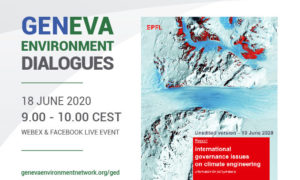
18 Jun 2020
09:00–10:00
Venue: Live | Webex Event & Facebook
Organization: Geneva Environment Network
The world is struggling to limit emissions of carbon dioxide and other greenhouse gases that are causing global climate change. This has brought increased attention to climate engineering technologies, which could counteract some disruptions and heating caused by elevated greenhouse gases. However, climate engineering technologies could also cause unintended adverse impacts and consequences on the environment and sustainable development, generate controversy and pose governance challenges.
About the GENeva Environment Dialogues
The aim of the GENeva Environment Dialogues is to discuss current and pressing topics on the global environmental agenda. At this session, a new report analyzing international governance issues on climate engineering was presented.
About Climate Engineering
Climate engineering refers to a broad set of methods and technologies that aim to deliberately alter the climate system in order to alleviate the impacts of climate change. Most, but not all, methods seek to either increase net carbon sinks from the atmosphere at a scale sufficiently large to alter the climate, or reduce the amount of absorbed solar energy in the climate system. Climate engineering raises scientific and technical questions as well as many ethical, legal, and equity issues.
New research study
A new scientific research study “International Governance Issues on Climate Engineering” was recently released in June 2020. The report is edited by the International Risk Governance Center (IRGC) of the Ecole polytechnique fédérale de Lausanne (EPFL) for the Swiss Federal Office for the Environment (FOEN).
Some climate engineering technologies are being developed to remove CO2 from the atmosphere (carbon dioxide removal, CDR), which is expected to contribute to reducing and preventing climate change. Other technologies (solar radiation modification, SRM) would artificially cool the planet and could reduce some symptoms and risks of climate change. Immediate and meaningful steps may need to be taken to lay a foundation for a decision process regarding the research, policy, regulation and possible use of climate engineering.
Driven by questions and needs of the international community of policymakers to better understand the potential benefits, opportunities, risks, uncertainties and other challenges of CDR and SRM, at both technical and governance levels, this new report reviews and compares technologies before surveying the current legal and institutional landscape of governance regarding climate engineering. It then addresses trade-offs between risks and discusses possible options for international governance, including criteria for evaluating options. The need for more inclusive approaches and the pros and cons of institutional fragmentation are emphasized. Options for sites of international governance are discussed, for various technologies, as well as general principles and specific recommendations to: distinguish between CDR and SRM in their additional dedicated governance, accelerate authoritative international scientific assessment, encourage the research, development and responsible use of CDR technologies, explore potential governance of SRM while remaining agnostic about its use, and to consider also mechanisms of non-state governance.
Speakers
Facilitators: GEN Team
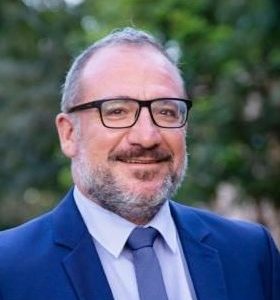
Bruno POZZI
Director for Europe, UNEP
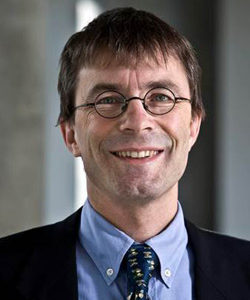
H.E. Franz PERREZ
Ambassador for the Environment, Switzerland

Marie-Valentine FLORIN
Coordinator of the Study, Executive director, International Risk Governance Center, EPFL
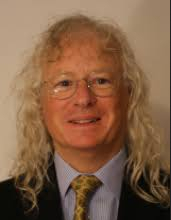
Paul ROUSE
Author of the Study, Carnegie Climate Governance Initiative (C2G)
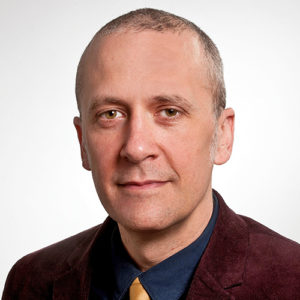
Jesse REYNOLDS
Author of the Study, University of California (UCLA)

Lili FUHR
Head, International Environmental Policy Division, Heinrich-Böll-Stiftung
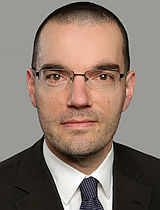
Oliver GEDEN
German Institute for International and Security Affairs, Lead Author IPCC 6th Assessment Report
Summary
Welcome and introduction
Moderation: Diana Rizzolio, Geneva Environment Network
The world is struggling in limiting emissions of carbon dioxide and other greenhouse gases that are causing global climate change. This has brought increased attention to climate engineering technologies, as these aim to counteract some disruptions and heating caused by elevated greenhouse gases. However, these technologies could also cause unintended adverse impacts and consequences on the environment. These technologies generate controversy and they pose governance challenges.
Various international bodies and foras have discussed these technologies as we will hear from the experts that have joined us today. For what concerns the climate science, the Fifth Assessment Report of IPCC and their 1.5 degree report make reference to the anthropogenic activities that could remove CO2 from the atmosphere, providing a review of climate engineering measures.
We are convening this discussion today as a new research study prepared by a group of scientists is being released. The report launched today is edited by the International Risk Governance Center (IRGC), at the Ecole polytechnique fédérale de Lausanne (EPFL) and was commissioned by the Swiss Federal Office for the Environment (FOEN).
To welcome you to this discussion on a topic that will be addressed in major upcoming environmental negotiations:
- Bruno Pozzi, the Director for Europe, UNEP
- H.E. Amb. Franz Perrez, the Ambassador for the Environment, Switzerland
To present you the new report:
- Marie-Valentine Florin, Coordinator of the Study that is being launched today. Marie-Valentine is the Executive director of the International Risk Governance Center at EPFL
- Paul Rouse, Author of the Study. Paul is a science advisor at the Carnegie Climate Governance Initiative (C2G)
- Jesse Reynolds, Author of the Study, School of Law of the University of California (UCLA)
Two experts will provide complementary views on these technologies:
- Lili Fuhr, is the Head of the International Environmental Policy Division, Heinrich-Böll-Foundation. Lili has not been involved in this publication, which was only shared with her this week. Lili will speak in the name of a broader alliance of civil society organizations. When preparing this event Lili deplored that the voices from civil society, local communities and other rights holders such as indigenous peoples are often only included as an afterthought or stakeholder comment, this providing an imbalanced discussion of this important topic.
- Oliver Geden, German Institute for International and Security Affairs, who is a Lead Author IPCC 6th Assessment Report. The co-chair of IPCC working group 3 on mitigation of climate change, Jim Skea, strongly recommended to involve Oliver in this discussion.
Bruno Pozzi, Director, UNEP Europe Office
- Important dialogue on the governance issues of climate engineering
- We know there is one imperative: to limit the rise in temperatures to 1.5°C
- We need to reduce CO2 emissions – first priority
- Sometimes it is difficult to cut emissions though – changing lifestyle is difficult
- Some technologies are being developed – some in advanced stages (afforestation and reforestation), some in their infancy – both need governance
- Important discussion to gather advices, evidence and see what the governance system of climate engineering might look like
- First actions is to decarbonize through a change in lifestyle, then we will consider other actions if needed
H.E. Franz Perrez, Ambassador for the Environment, Switzerland
- Climate change is one of the biggest challenges of today – threat to well-being, prosperity and survival of many
- We are not on track to 1.5°C
- Climate engineering or geoengineering or climate-altering technologies have been researched as a new approach to address the fundamental challenges of climate change
- Many different technologies – fundamental uncertainties related to the negative or positive impacts on the environment, on the globe, on the ecosystems, on the climate, on the weather
- How would these activities be governed if we should use them at all
- Switzerland is concerned that someone would use these technologies to solve very specific problems, thereby creating other unwanted problems
- Several fora have started discussing climate engineering:
- CBD has adopted a resolution in the framework of the London Convention (Convention on the Prevention of Marine Pollution by Dumping of Wastes and Other Matter)
- Montréal Protocol started a discussion
- The IPCC started a discussion
- Very limited, very specific focus on that – Switzerland wants a more comprehensive understanding of the risks, uncertainties and possible governance needs
- Switzerland presented a draft resolution at UNEA-4, that would mandate UNEP to prepare an assessment of risks, potential and possible needs of climate engineering technologies
- This resolution did not pass – Switzerland asked the EPFL to assess climate engineering
- We hope that the information in the assessment will help guide the next steps of climate engineering
The report on international governance issues on climate engineering
Marie-Valentine Florin, Executive Director, EPFL-IRCC
- Report assesses broad issues of international governance of climate engineering, defined as the intentional intervention in the climate system to address the problems of climate change
- In the report, they suggest that decision-making on climate engineering (Carbon Dioxide Removal and Solar Radiation Modification) would benefit from additional dedicated governance
- The report provides information and policy-options – no prescriptive recommendations
- The climate problem:
- We need to remove 600 Gt of CO2 by 2100
- Anthropogenic emissions are 40 Gt of CO2 per year
- Priority n°1: reduce CO2 emissions at source
- Two technologies:
- Carbon Dioxide Removal (CDR) – remove carbon dioxide from the atmosphere and permanently store it, addressing the cause of climate change
- Solar Radiation Modification (SRM) – reduce planet warming, reducing symptoms but not addressing the cause
- The two technologies are so different that they require different considerations
- Climate engineering is an overarching, general term that might be confusing for the public and for policy makers
- Revisiting the framing of climate engineering in the context of the fight against climate change:
- Climate engineering is not an alternative to CO2 emissions reductions
- CDR is needed to complement the reduction of emission
- Few techniques are mature and could have very large environmental and social impacts
- SRM might be needed sometime in the future to reduce temperature increase
- But there are severe possible consequences that need to be considered
- One of the goals of the report is in articulating, interrelating and building complementarity among the different techniques
- Process of the report:
- Introduction on the context and the interest of climate engineering
- Chapter 1: review of technologies
- Chapter 2: review of current international arrangements
- Chapter 3: trade-offs between risks
- Chapter 4: governance options
- Multi-stakeholders’ workshop
- Conclusion on cross-cutting themes, roadmap for a conversation and research questions
- Cross-cutting themes from the 4 chapters:
- Uncertainty – adaptive approached are advisable
- Separation of CDR and SRM in policy discussion
- Existing international arrangements lean towards engaging in further research and cooperation
- Top-down and bottom-up approaches will be needed
Paul Rouse, Science Advisor, Carnegie Climate Governance Initiative
- We have no view on climate-altering technologies, in terms of whether we should use them or not
- We have a view that, in the context of the findings of the IPCC and of the goals of the Paris Agreement, it is time to discuss governance of climate-altering technologies – we seek to catalyse that process, not to participate in it
- Chapter 1: review of technologies
- No value judgment, nor policy prescription, nor normative ideas
- Reflection of the literature that is currently available
- We need to separate CDR and SRM – very different technologies and approaches, different needs and considerations
- 18/20 technologies, approaches, techniques:
- Principles underlining each of the approaches
- Describe technological readiness of each
- Potential carbon dioxide removal or carbon dioxide storage or to cool the planet
- Economics and possible social responses to them
- Potential environmental consequences, in balance with the consequences of not acting and with the continued effort to reduce emissions
- Considerable uncertainty that remains with all the approaches
- Example of afforestation:
- Potential of carbon sequestration ranging from 3 to 18 Gt of CO2 per year
- Potential cost of sequestered CO2 ranging from 2,5 to 180 CHF per tonne
- Evidence uncertain and ambiguous
- We need to have greater clarity to know what each of these technologies is capable of doing and at which cost
- Ambiguity is an opportunity to have broad conversations
- Chapter 2: review of current international arrangements
- International legal and institutional arrangements relevant to the governance of these technologies
- Focus on international law and international institutions related to the protection of the environment
- Looks at specific instruments available
- Explores relevant institutions
- Discussion on soft law and other relevant instruments
- There are some general norms applicable, but there are significant gaps – some of the instruments that specifically addressed these technologies are very limited in their objectives, scope and mandates – patchwork of norms
- Need for greater cooperation at the international level to promote effective, legitimate and fair governance of these processes
Jesse Reynolds, Emmet/Frankel Fellow Environmental Law and Policy, UCLA Law School
- Chapter 3: trade-offs between risks
- Climate change governance is at its heart a question of risk management
- Risk-risk trade-offs are inherent to the governance of CDR and SRM
- Very difficult challenge:
- Every decision will have risks and counter-risks
- Uncertainty and high stakes
- Risks in:
- Environment (Physical risks)
- Policy design and governance
- Research and research funding
- Chapter 4: governance options
- Elements and steps for global governance
- Recommendations for states and Intergovernmental Organization
- 3 foundations for the recommendations:
- Assessment criteria: what do we want governance of CDR and SRM to do?
- Values and functions universally agreed upon in policy-making (reducing the impacts of climate change, reducing the concentration of GHG)
- Governance sites: institutional homes where decision-making might take place – most are IO, based on their functions, their expertise, their competences
- Substance of governance: what could governance do with respect to CDR?
- First priority is reducing carbon emissions
- Distinguish between CDR and SRM and between the specific techniques in additional governance – distinct roles, methods, risks and governance needs
- Accelerate authoritative, comprehensive, international scientific assessment of CDR and SRM – IPCC seems a good candidate for that
- Encourage research, development and responsible use of CDR techniques
- Capacity-building financing – need to help under-developed and developing countries in the evaluation of CDR and SRM technologies
- Implementation and elaboration of non-state governance of CDR and SRM
- Explore further governance of SRM, remaining agnostic about its ultimate use
- Assessment criteria: what do we want governance of CDR and SRM to do?
Marie-Valentine Florin
- The conclusion emphasizes the need for a roadmap to have a broader conversation and sets out some more specific themes for research
Complementary views on climate engineering
Lili Fuhr, Head, International Environmental Policy, Heinrich-Böll-Stiftung
- An overarching majority of civil society globally rejects geoengineering
- Hands off Mother Earth Campaign, Climate Action Network, Friends of the Earth International, Climate Land Ambition Rights Alliance, Climate Justice Alliance, Indigenous Environmental Network, to give some examples
- Fundamental concern for civil society:
- Human rights impacts of geoengineering
- Challenges of meaningful participation of the most affected
- Underlying causes and drivers of climate change:
- Paradigm of endless growth
- Extractive nature of our economic structure
- Inequalities, discrimination, racism
- We need to go beyond “Business As Usual” when looking for solutions, but we need some rules to do that
- Overarching majority of papers on geoengineering address governance issues to advance geoengineering, they are not to be impartial, agnostic on it
- Geoengineering researchers invoke the IPCC as an authority to back their claims, ignoring the warnings of the IPCC on the uncertainties and impacts of CDR and SRM
- No amount of research can predict the response of the Earth’s ecosystems
- 3 core demands from civil society on the governance of geoengineering:
- International and enforceable ban on solar geoengineering (SRM) and other geoengineering technologies that would intervene in barely understood complex ecosystems to achieve a planetary climate effect
- No public support for any technologies that would prolong the lifespan of the fossil fuel industry (most of CDR and all carbon capture and storage (CCS) approaches)
- Clear criteria based on concepts such as Planetary Boundaries, Human Rights and SDGs to guide research into any new approaches to address the climate crisis, with a focus on nature-based solutions, which maintain ecosystems integrity and support local communities and indigenous peoples
- The decentralized implementation at a planetary scale of nature-based solutions is often dismissed as naïve or impossible
- Reports like this are part of the governance – who writes them influences the outcomes of governmental decision-making
- When it comes to discussing the regulation of new and emerging technologies, governments often go to those researching and developing these very technologies as their experts
- Advocates of geoengineering point to the failure of the current environmental governance system, proposing to unleash these technologies and suggesting that we will somehow find a new governance regime along the way
- The very idea of geoengineering implies transboundary effects, it cannot be implemented locally
Oliver Geden, Lead Author, IPCC 6th AR SWP
- IPCC decided not to use the term geoengineering anymore – distinguish not only between SRM and CDR, but also between different techniques – geoengineering has turned into quite an ambiguous term
- We should stop treating CDR as something far away in the future – afforestation at large scale is already being implemented, other techniques are in development as well
- Still small scale compared to the global mitigations’ scenarios
- Not an either … or … situation
- CDR techniques will become part of the climate policies portfolio, but will depend from country to country
- Current policy-making sphere – governments decided to use CDR technology by having Article 4 of the Paris Agreement, stipulating the need for balance of CO2 emissions’ sources and carbon sinks – some residual emissions will remain anyway
- We are not on a trajectory towards 1.5°C, nor towards 2°C – at some point if we continue on this trend, we will have to seriously discuss SRM – this report gives good recommendations and reflections on how to do that
Additional remarks
H.E. Franz Perrez
- We need a better understanding of the different technologies
- There are tremendous concerns as highlighted by several speakers
- Important to look at these concerns before engaging in something that bears unreasonable risks
- This is topic that needs to be pursued
Questions
Andrew Morton, UNEP Crisis Management Branch
- Given the noted wide divergence of national views and agendas on climate change in general, irrespective of the rationale, what is your view of the potential of ever getting a universal, for example, the UN, Member State buy-in to setting up a governance framework. In the context of this current and anticipated blockage on the UN route, have the panelists and Switzerland considered a non-universal membership approach: starting with a small group and growing incrementally?
Daniel Bodansky
- I’m wondering about the rationales are for international governance of CE? Is governance always needed or only for some CE techniques? Is governance needed of direct air capture? If so, what would be the rationale?
Yves Lador, Earthjustice
- A crucial issue. It’s well known that “When you eat at the devil’s table you must have a very long spoon !” Here the spoon seems a bit short. First, there is no reference to the legal obligations under Aarhus Convention, including on GMO or the Escazu agreement. Second, international trade pretends to also protect environment, when actually it’s a main driver of environmental collapse. What is different in this approach? Will it not just encourage geoingeneering and provide no protection? Just like with trade.
Wilson Hago
- Is SRM on the agenda for COP26?
- What’s a ‘natural’ solution?
Answer from Lili Fuhr: The term “Natural Climate Solutions” is widely used; I actually don’t find it useful because it is so vague. What I referred to are solutions that work with nature and proven practices such as ecologic restoration, agroecology, reforestation. I mentioned them in contrast to engineered solutions.
Gita Parihar
- Shouldn’t decisions about risk be grounded in human rights and the ecosystem impacts of geoengineering, with engaged public participation? A CBD regulatory study notes it is difficult to distinguish between research and actual deployment impacts if scale alone considered.
Burnice Karimi Ireri
- How do you balance the trade-offs between the moral hazards being addressed by the CSOs and ensuring sustainable development? What is the opportunity cost of implementing geoengineering/ climate engineering?
Specific questions to speakers:
Elenita Dano, ETC group, to Jesse Reynolds:
- Can you elaborate what you mean by “non-state governance”? will there be mechanisms for accountability and liability involved?
Andrew Lockley to Jesse Reynolds:
- SRM may reduce climate risk, but is there a potential for an increase in political risk which outweighs the climate benefits?
Andrew Lockley to Lili Fuhr:
- You criticize “self-appointed experts”, but it’s unclear that the geoengineering critics in your network either a) possess expertise in the subject b) have representative legitimacy to anyone other than their donors and/or members. Why should we take their criticism more seriously than we take the opinions of experts who hold senior academic positions and produce their work through the peer review process?
Matthias Honegger (IASS & Perspectives) to Oliver Geden:
- Having studied the politics including of the political right, what might academia have been missing in terms of political dynamics around CDR or SRM that we may have to expect?
Answers
H.E. Franz Perrez
- Explored the option for member-based approach in other areas
- At this moment, we need a common understanding of the challenges we are facing – important to go beyond the small group of countries that are interested
- Important to have an assessment by an authoritative institution
- It is not sufficient if only the countries concerned with climate engineering develop capacity and knowledge
- Focus on multilateral framework that includes everybody
H.E. Franz Perrez
- At the moment, we do not simply understand risks and consequences
- There seems to be some indication that some technologies will not trigger consequences and risks that require governance and regulation, but others certainly will
Marie-Valentine Florin
- One of our suggestion is to begin from a conversation: inclusive governance, complementarity, diversity of views
- Climate engineering has been on the table for 20/30 years
- Difficult to meet the Paris Agreement targets without climate engineering
- There is no single solution
- Conversation between science and policy has to start – top-down – but the bottom-up approach will be essential as well
- Overarching principles for climate engineering, then assessment, research and report
- Decompose the governance aspect, set up a process – there is not yet a normative desirable goal
- In the report, you will see various specific research questions on different risks and problem
Jesse Reynolds
- Need to differentiate various techniques and technologies
- Governance is much more than binding international law – scientific assessment is included
- Some of CDR and all the SRM have greater governance needs and requirements than other types of CDR
- Difficult to reach agreements in the environmental domain, therefore agreement on climate engineering will be difficult as well
- The problem with emissions’ cuts is the collective action problem – free-rider problem – countries will fail to live up to their fair share
- Use of SRM does not have the problem of collective action – not necessarily a prohibitive issue
- It must be weighed up against the challenge of living in a 3 to 4°C warmer Earth
Paul Rouse
- Universal UN framework – too early to say
- Need to start a conversation – a plural, inclusive, broader conversation
- How do you go about doing that?
- Challenge about the governance
- Monitoring and reporting would be necessary
Lili Fuhr
- Some instances of governance on climate engineering are there
- Need not to undermine the (weak) governance system that is in place
- Build on the stepping stones we have
Oliver Gedes
- See where we need international governance in relation to the specific techniques
- Transboundary effect – need for international governance
- London protocol decision to be considered
- Policy makers do not want to rush in this debate – worried about political and environmental risks
Additional answers delivered after the event
Lili Fuhr to Daniel Bodansky: The very idea of geoengineering implies impacts at the planetary level. There is so such thing as “local geoengineering” – how else would one achieve a climate effect? Not every CCS plant is geoengineering. But the idea of sucking carbon out of the atmosphere at levels where this would have discernable climate affects has not only transboundary implications but puts the integrity and functioning of the Earth system’s at risk – that does not only apply to SRM, also to CDR and other geoengineering approaches. I am curious to hear why you think this could be done without governance?
Lili Fuhr to Gita Parihar: Thank you for pointing that out, Gita. I can only agree with you. This also means that the differentiation between SRM and CDR as two completely separate issues will undermine a comprehensive governance approach and risks leaving aside some approaches that fit in neither of the technologies. The London Protocol approach of addressing the marine approaches offers a useful way forward here.
Lili Fuhr to Andrew Lockley: There are implicit and incorrect assumptions in your question that I would like to briefly address here:
- You seem to imply that only people who hold “senior academic positions” can be considered experts: This is misleading and dangerous since a) there are a multitude of ways of producing knowledge beyond academia, and b) academics are not immune to conflicts of interest – certainly when they are actively involved in businesses or investments directed at the space – see for example https://www.exponentialinvestor.com/technology/profiting-from-fixing-the-climate/ or https://www.power-technology.com/features/origen-can-natural-gas-plant-solve-emissions-riddle/ or https://carbonengineering.com/
- Publication in peer-reviewed journals is an important way of advancing knowledge but it is not the only means. In fact, many influential reports are not peer-reviewed, even peer-reviewed papers are routinely misrepresented to the press by advocates, and the peer-review process itself has many unresolved challenges and is neither necessary nor sufficient for producing credible and useful data or information.
- Most importantly: your question seems to imply that people with senior academic positions are in agreement when it comes to advancing geoengineering research – which is simply false. Senior academics have expressed and continue to express their concerns on the profound risks and implications of geoengineering – and their views and findings are also included in the IPCC’s assessments and special reports.
- Finally, with regards to your question of legitimacy of civil society’s position: I can only say that Heinrich Böll Foundation has a mandate firmly grounded in advancing the public good and we are indeed accountable to our members. In fact, many organisations that are part of the Hands off Mother Earth Campaign are actually member based organisations that represent these members and local communities, including farmers, fisherfolks, indigenous peoples. Others do research and hold senior academic positions.
Closing remarks
Bruno Pozzi
- Interesting debate
- Variety of questions – complex issue – we should have further discussions and debates
- It is a journey humanity will have to take, because at the end of the day, it is the future of our planet at stake
Documents
- Report: International Governance Issues on Climate Engineering [PDF]
Report also available on FOEN website - International Governance in Climate Change | Authors Presentation | 18 June 2020
- Lili Fuhr | Geoengineering & Hands Off Mother Earth Campaign | 18 June 2020
Video
The event was live on Facebook.
Links
IRGC
- Climate Engineering Risk Governance | EPFL International Risk Governance Center (IRGC)
UN System
- Geoengineering debate shifts to UN environment assembly | Jeff Tollefson | Nature | 7 March 2019
- Special Report 1.5° Global Warming | IPCC | October 2018
- Bonn: Climate engineering is risky, but should be explored, experts say at UN conference | UN News | 16 November 2017
- Synthesis Report (SYR) of the IPCC Fifth Assessment Report (AR5) | IPCC | 2014
- Geoengineering to Combat Global Warming | UNEP global environmental alert service | May 2011
Carnegie Climate Governance Initiative
- Policy Brief re Solar Radiation Modification Governance | Carnegie Climate Governance Initiative
- Policy Brief re Governing Large-Scale Carbon Dioxide Removal | Carnegie Climate Governance Initiative
- Evidence Brief re Solar Radiation Modification Governance | Carnegie Climate Governance Initiative
- Evidence Brief re Governing Nature-based Solutions to Carbon Dioxide Removal | Carnegie Climate Governance Initiative
- Governing large-scale CDR: Are we ready | Carnegie Climate Governance Initiative
- Carbon Removal and Solar Geoengineering: Potential implications for delivery of the Sustainable Development Goals | Carnegie Climate Governance Initiative
Civil society
- Geoengineering Technologies explained | Heinrich Boell Foundation
- Geoengineering Monitor
- Interactive geoengineering map | ETC Group and Heinrich Boell Foundation
Other resources
- Geoengineering-Governance | German Environment Agency | 16.10.2019
- Nonstate governance of solar geoengineering research | Reynolds, J.L., Parson, E.A. | Climatic Change 160, 323–342 (2020)
- A New Report on Governing Climate Geoengineering | Jesse Reynolds | Legal Planet | 18 June 2020
